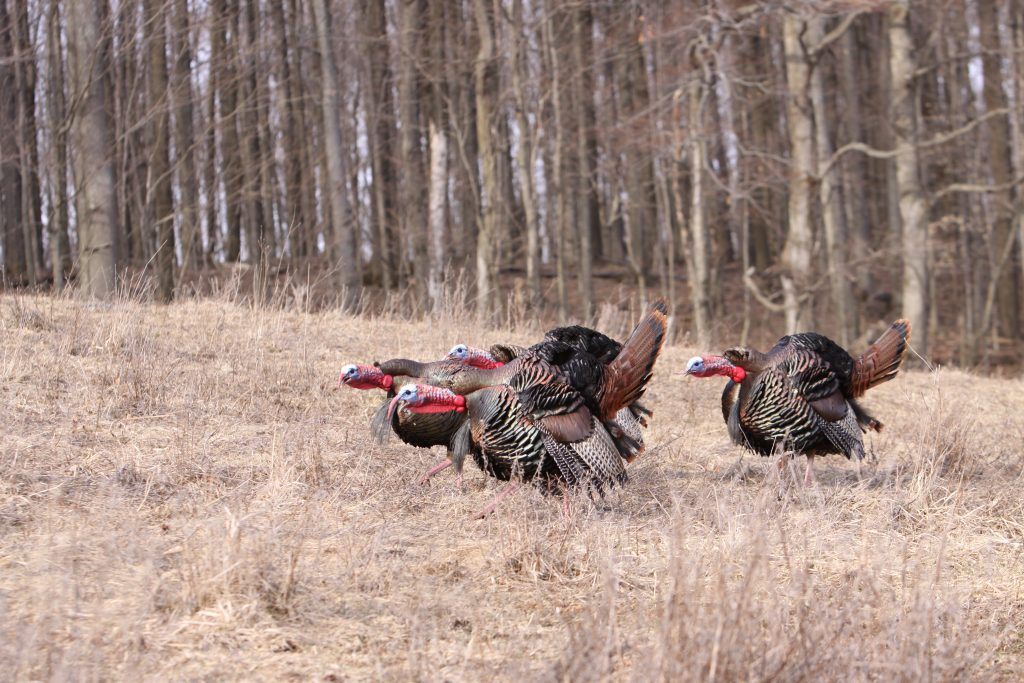Fall Flock Dynamics
There are stark differences between spring and fall turkey flocks. Here’s what you should know.
Spring turkey flocks and fall flocks are different. Significant variations occur within the frameworks of the two. Here is what you should know about fall turkey flock dynamics and what to know about wild turkeys in autumn.
But first:
Spring Dynamics
Most turkey hunters are familiar with the dynamics of spring turkey flocks. During the spring breeding season, wild turkey flock dynamics can vary significantly; the phase of the breeding cycle, numbers of turkeys and social elements can impact this. It’s common to see large groups of birds, small groups of birds, groups of hens, groups of jakes, multiple toms running together, several toms courting a flock of hens and more.
While the spring flock dynamics can vary greatly, fall flock dynamics tend to be more consistent. Here are seven things to know:
Large Groups of Birds
During the fall and winter months, most turkeys join ranks with other birds. At this time of year, it’s quite rare to see turkeys on their own. When that happens, they’ve likely been recently split up from the flock, turkey numbers are low, or the lone bird is ill.
Female Flocks
It’s quite common for hens to flock up with other hens. This can lead to large gatherings of mature hens, as well as jennies, which are sub-adult female turkeys. Occasionally, younger jakes are part of these groups.

Male Flocks
Likewise, most male birds join up with others of their kind. This can result in large groups of jakes, toms or a combination of both.
Continued Gobbling
Don’t think for a second that gobblers don’t gobble in the fall. They most certainly do, and they carry that behavior on into winter, too. Simply, while gobbling peaks during the breeding season in spring, turkeys gobble all year long.
Shifting Ranges
Don’t expect fall turkeys to spend a ton of time where they’ll be in spring. Their ranges might overlap some, but a lot of birds will start hanging out in other areas, too. As with other wild game animals, seasonal range shifts occur.
Lesser Reactions to Calling and Decoying
It’s inaccurate to say you can’t call or decoy in a fall turkey. However, during fall season hunts, expect lesser reactions to these efforts. That said, where permitted, don’t overlook the power of a turkey dog and some kee-kee call-back action.
Pecking Order Determination
Much of the wild turkey pecking order is established during the fall and winter months. That’s why you see and hear big fights between birds between September and February. They’re figuring out who’s boss and who’s not.
All things considered, turkeys express a very interesting fall flock dynamic. These incredible animals showcase a wide range of intriguing behavioral elements, and now is the time to get out there and experience it for yourself.
CONNECT WITH US
National Wild Turkey Federation
770 Augusta Road, Edgefield, SC 29824
(800) 843-6983
National Wild Turkey Federation. All rights reserved.
